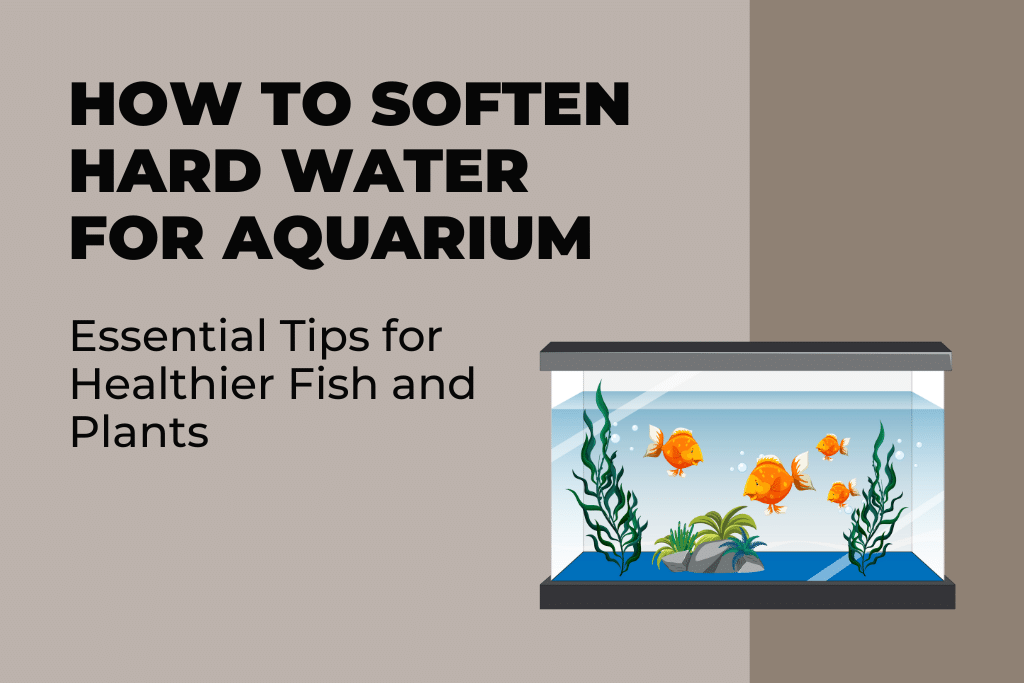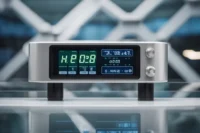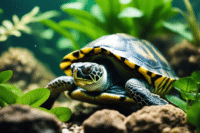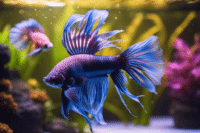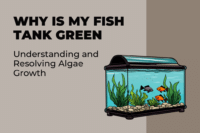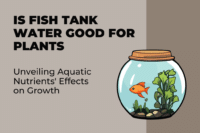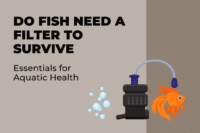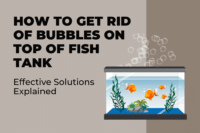Maintaining appropriate water conditions is crucial for the health of fish and plants in an aquarium. One common issue that aquarists face is hard water, which can have elevated levels of minerals like calcium and magnesium. Hard water not only causes scaling on the tank’s decor and equipment but can also have a negative effect on the well-being of certain fish species. Therefore, understanding and controlling the hardness of aquarium water is essential.
Softening water for an aquarium involves a delicate balance, as outright removing all minerals can be harmful. Instead, the goal is to reduce the levels to a range that is suitable for the tank’s inhabitants. Various methods, both natural and artificial, can achieve this, such as using peat moss, installing water softening equipment, or even mixing with naturally soft water. Regular testing of water hardness helps maintain stable conditions, which is vital to prevent stressful fluctuations for the aquarium life.
Key Takeaways
- Balancing water hardness is essential for fish health.
- Various methods exist to safely soften aquarium water.
- Regular testing is important to maintain optimal water conditions.
Understanding Water Hardness in Aquariums
Before adjusting the water in an aquarium, it is crucial to grasp the concepts of General Hardness (GH) and Carbonate Hardness (KH), and how elements like magnesium and calcium affect these parameters.
General Hardness (GH) and Carbonate Hardness (KH)
General Hardness (GH) refers to the concentration of magnesium and calcium ions in water. Measured in degrees of hardness (dGH) or parts per million (ppm), GH is a key factor in determining the suitability of aquarium water for different species of fish. Carbonate Hardness (KH), on the other hand, measures the water’s buffering capacity, which is its ability to maintain a stable pH level. KH is also expressed in degrees (dKH) or ppm.
The Impact of Magnesium and Calcium on Hard Water
Magnesium and calcium are the principal contributors to water hardness. In aquarium water, higher levels of these minerals make the water hard. The hardness of water influences the health and breeding of aquatic life. Testing for GH and KH is a routine part of aquarium maintenance, ensuring that the water conditions meet the specific needs of the inhabitants.
Natural Softening Methods
When looking to soften aquarium water, natural methods are often preferred due to their effectiveness and safety for aquatic life. These techniques utilize various elements such as peat moss, driftwood, and the natural softness of rainwater without introducing chemicals into the ecosystem.
Utilizing Peat Moss and Driftwood
Peat Moss: An effective natural option to soften aquarium water, peat moss releases tannic acids which naturally lower the pH and can extract calcium and magnesium, effectively reducing water hardness. To use peat moss:
- Place peat moss in a mesh bag.
- Place the bag in the filter or directly in the water.
Driftwood: Similarly to peat moss, driftwood releases tannins into the water. These tannins impart a slightly acidic quality, which can help to gradually soften the water.
- Boil driftwood to remove excess tannins that can discolor water.
- Add the driftwood directly to the tank.
Both of these elements can help create an acidic environment by releasing tannins, which bind with bicarbonates in the water.
Collecting and Using Rainwater
Rainwater: It’s considered one of the softest and most natural forms of water available. Using rainwater is a straightforward approach:
- Collect rainwater in a clean container.
- Ensure no pollutants or debris are in the water.
- Gradually add the collected rainwater to the aquarium.
Rainwater lacks the minerals commonly found in tap water, reducing overall water hardness when mixed into the aquarium.
Implementing Soft Water Plants
Aquatic plants can be a natural ally in softening aquarium water. As they grow, they absorb minerals and bicarbonates from the water, effectively reducing hardness. Indian Almond Leaves are popular among aquarists for this purpose. To implement soft water plants:
- Choose appropriate soft water plants, such as Indian Almond Leaves or Java Fern.
- Introduce the plants into the aquarium.
- Regularly maintain and prune to optimize their water-softening capabilities.
These plants can complement peat moss and driftwood by contributing to a more stable and natural aquatic ecosystem.
Artificial Softening Techniques
When dealing with hard water in an aquarium, artificial softening techniques can be a precise way to control water parameters. These methods focus on removing excess minerals that contribute to the hardness of the water, which can be crucial for the health and wellbeing of certain fish species.
Reverse Osmosis Systems
Reverse osmosis systems (RO systems) are a popular choice for softening aquarium water. An RO system works by forcing water through a semi-permeable membrane, effectively removing a significant amount of minerals and contaminants. This process lowers the total dissolved solids (TDS) in the water, which can also result in a decrease in pH levels. It’s important to note that while RO water is softer, it may be too pure for some aquariums, and essential minerals might need to be replenished.
Water Softening Pillows and Chemicals
Water softening pillows are another method that can be utilized during water changes to reduce hardness. These pillows work by exchanging calcium and magnesium ions—responsible for hard water—with sodium ions. While effective, they can be considered an expensive long-term solution as they require regular replacement.
In contrast, using chemicals designed for softening aquarium water is often more cost-effective. These products typically contain chelating agents that bind with hard water minerals, making them inactive. Care must be taken, however, to ensure that the chosen chemicals do not adversely affect the aquarium’s biological balance.
Testing and Maintaining Softened Water
To ensure a thriving aquatic environment, accurate testing and diligent maintenance of softened water are paramount. These practices are vital for the health of aquatic pets, including species like African cichlids and tropical fish, which may require specific water parameters for optimal health.
Monitoring pH Levels
Testing pH levels regularly is essential as it affects fish health and biological processes in the aquarium. A stable pH ensures the optimal functioning of the aquarium’s ecosystem. To monitor pH levels:
- Use a reliable pH test kit or digital pH meter.
- Check the pH levels at the same time each day to avoid fluctuations due to daily cycles.
For fish species with specific pH requirements, such as African cichlids that thrive in slightly alkaline water, maintaining the correct pH balance is critical.
Water Quality and Frequent Water Changes
Maintaining high water quality is accomplished through frequent water changes. This practice dilutes pollutants and restores the water’s mineral balance. It’s recommended to:
- Perform regular water changes, approximately 10-20% of the tank volume weekly.
- Test water parameters after water changes to ensure conditions remain within the desired range.
Remember, each aquarium has unique requirements, and one should adjust water change frequency according to the tank’s bioload and the type of aquatic life it supports.
Choosing the Right Fish for Soft Water
When setting up an aquarium with soft water, it’s crucial to select fish that thrive in these conditions, as they require specific water hardness levels for optimal health.
Species Suited for Soft Water Environments
Tropical fish, such as tetras and bettas, are often considered ideal for soft water settings. These species are naturally found in habitats like the Amazon River, which is characterized by low mineral content. Tetras come in various vibrant colors and are communal fish, making them a popular choice for aquarists. Another suitable species is the Paradise fish, known for its striking appearance and adaptability to soft water parameters.
Examples of soft water fish:
- Tetras (e.g., neon tetras, cardinal tetras)
- Bettas (also known as Siamese fighting fish)
- Paradise fish
Adapting Aquarium Conditions for Specific Fish
Fishkeeping necessitates attention to detail, especially when adapting aquarium conditions for certain soft water fish. For example, tetras flourish in water with a pH level of 5.0 to 7.0 and hardness of 3 to 12 dGH. Breeding fish like bettas may require even softer water to mimic their natural breeding conditions. Aquarists should regularly test water parameters to ensure a stable environment that encourages good health and longevity of their fish.
Adaptation strategies include:
- Monitoring water parameters with a testing kit
- Adjusting the pH and hardness with natural methods like adding peat moss
By carefully selecting species suited to soft water and diligently managing aquarium conditions, a thriving and visually stunning soft water aquarium can be achieved.
